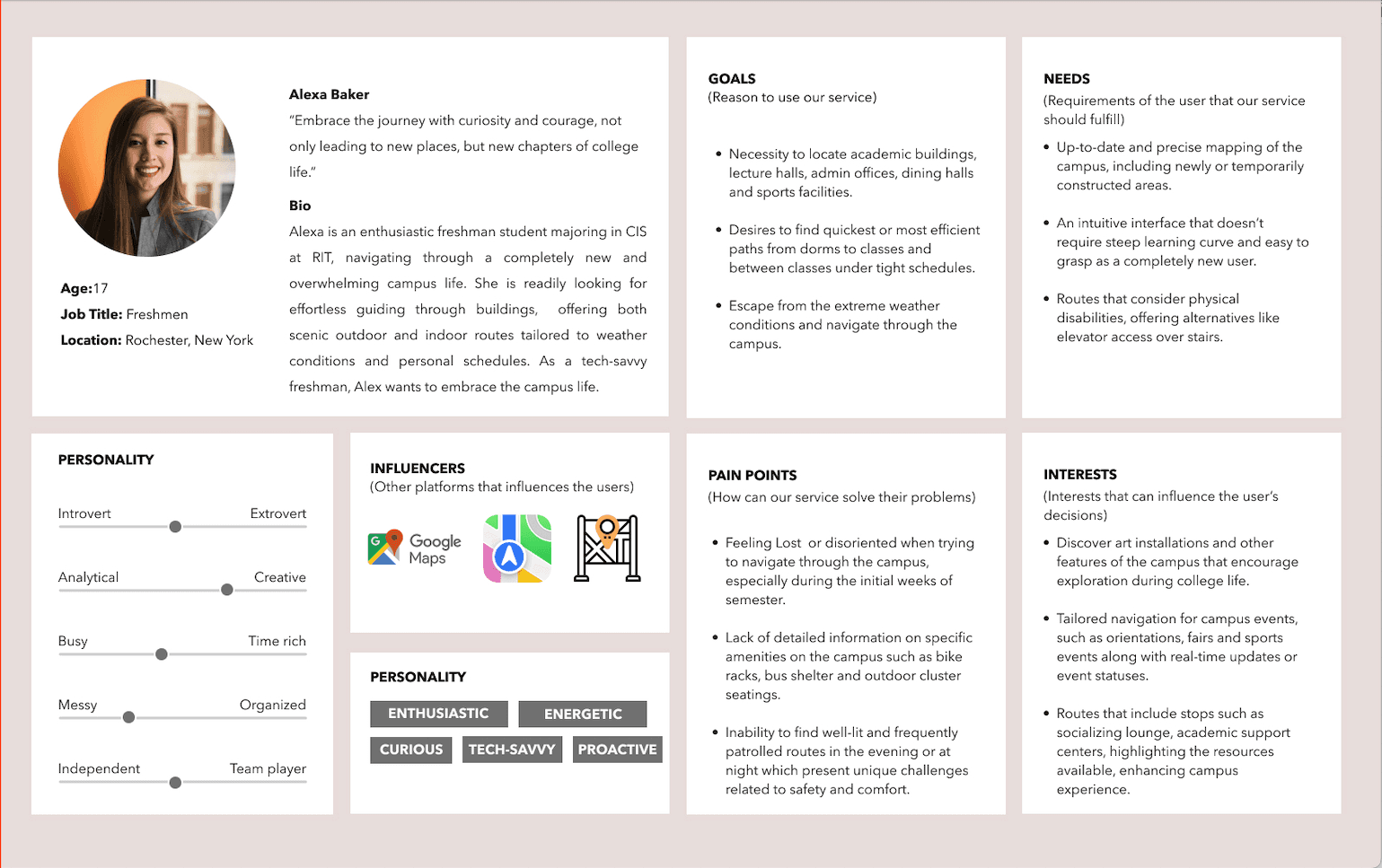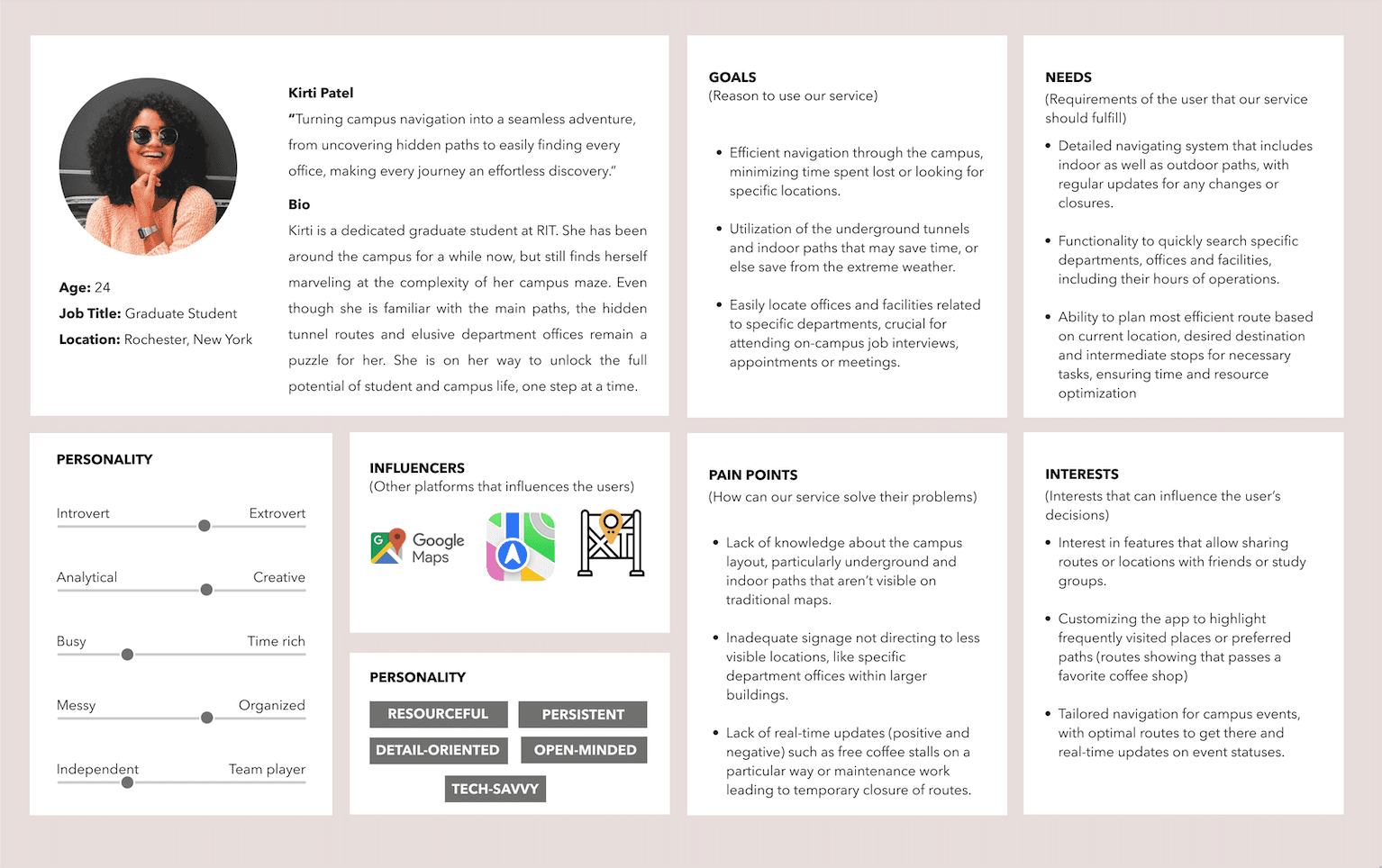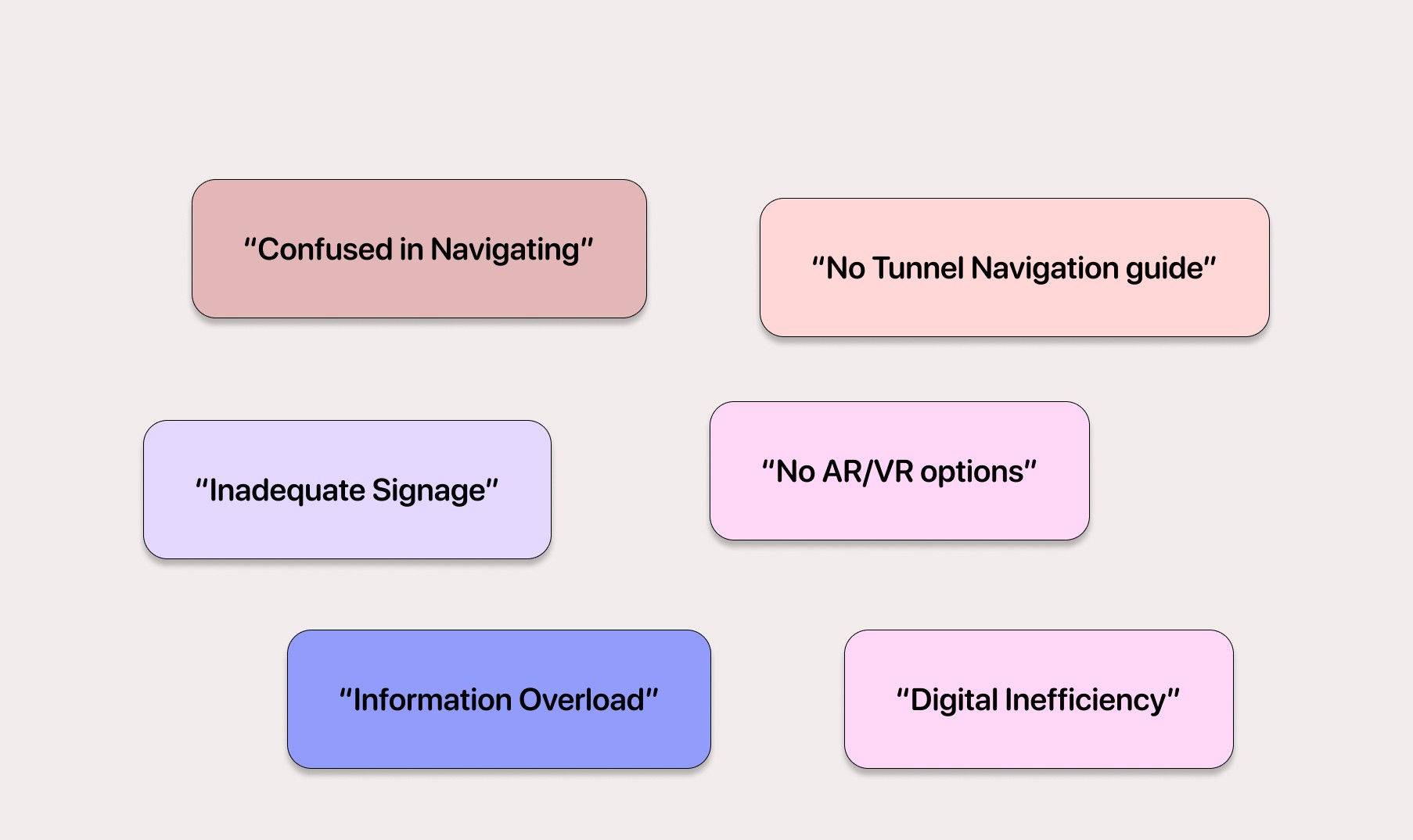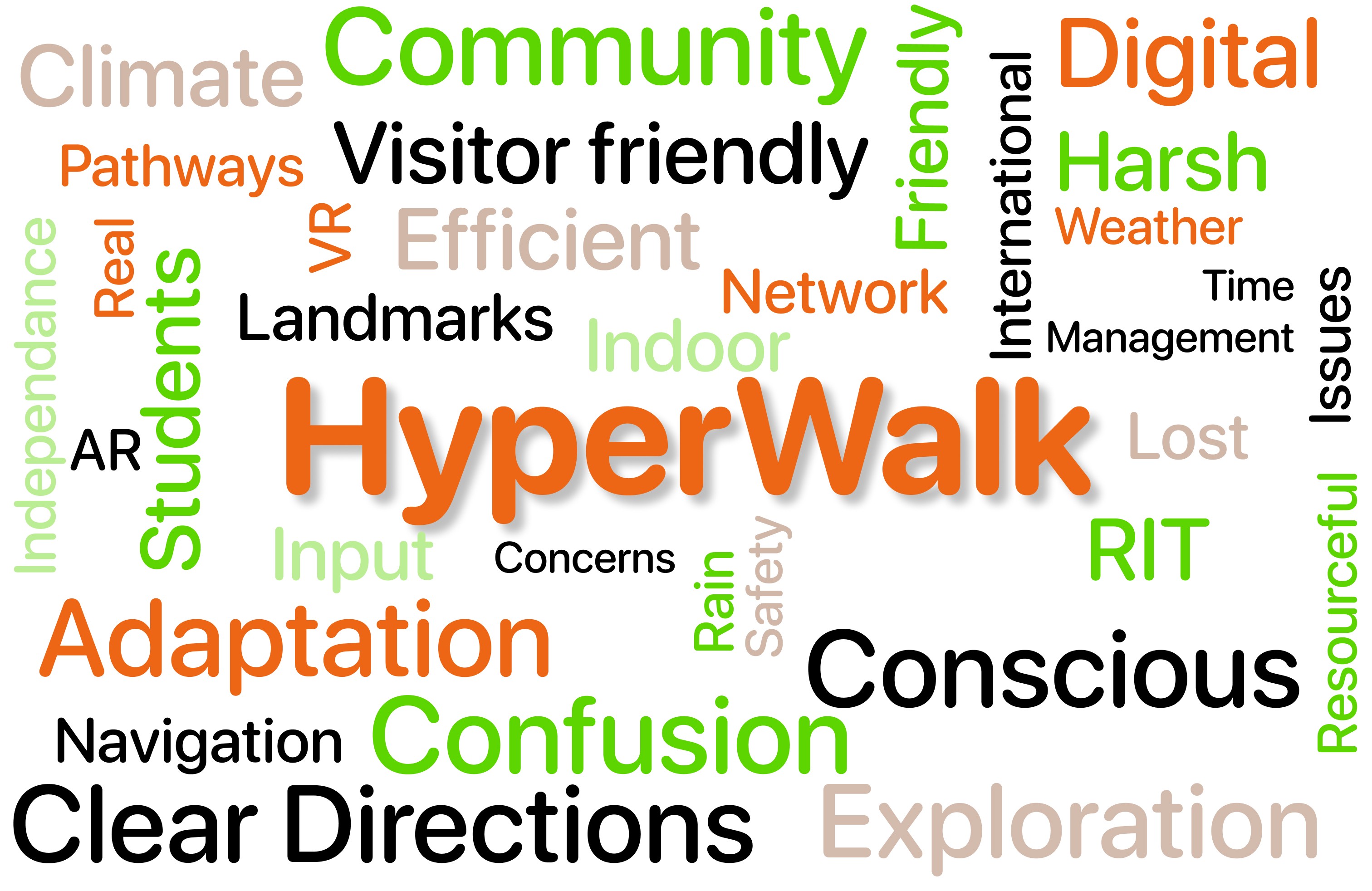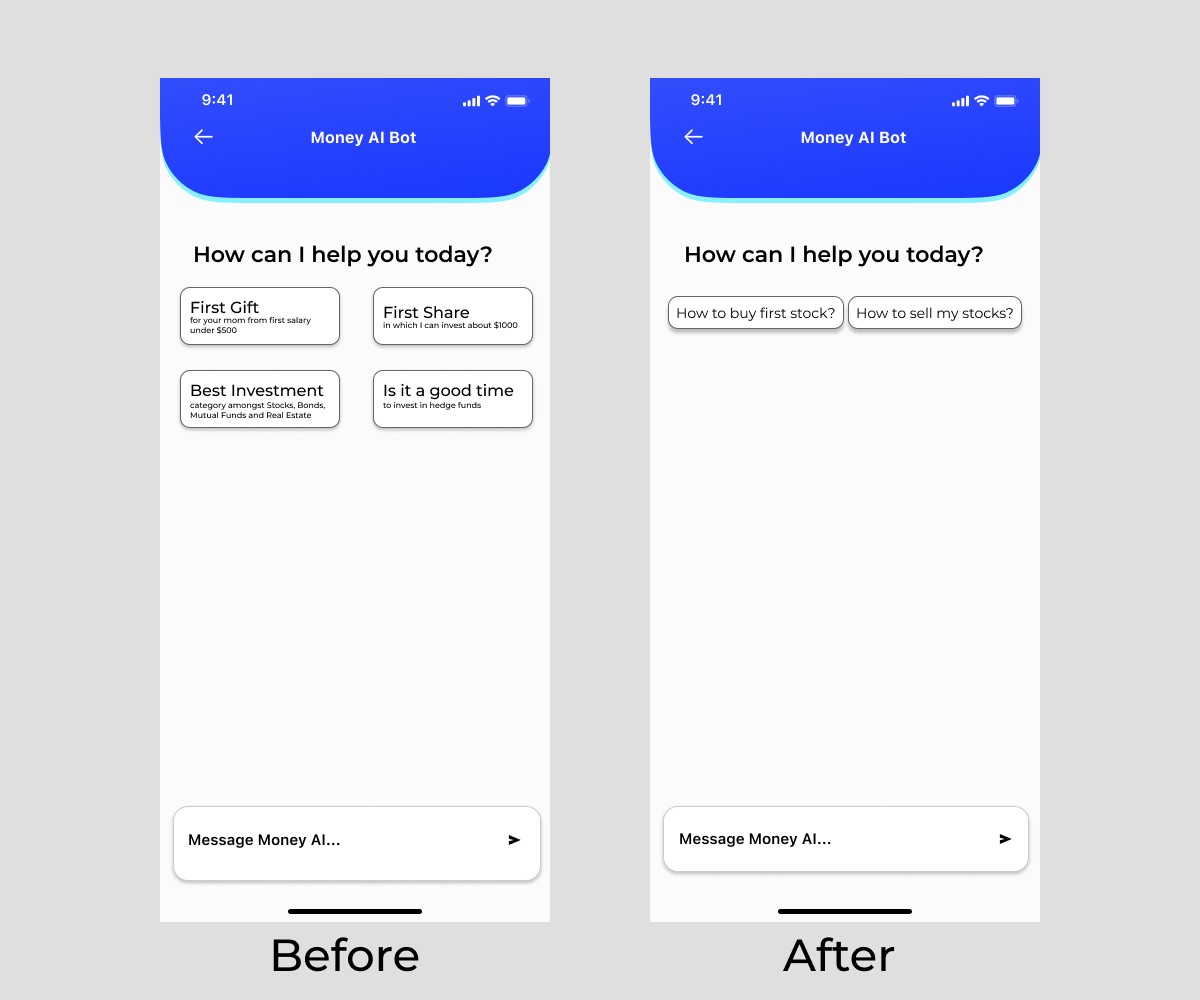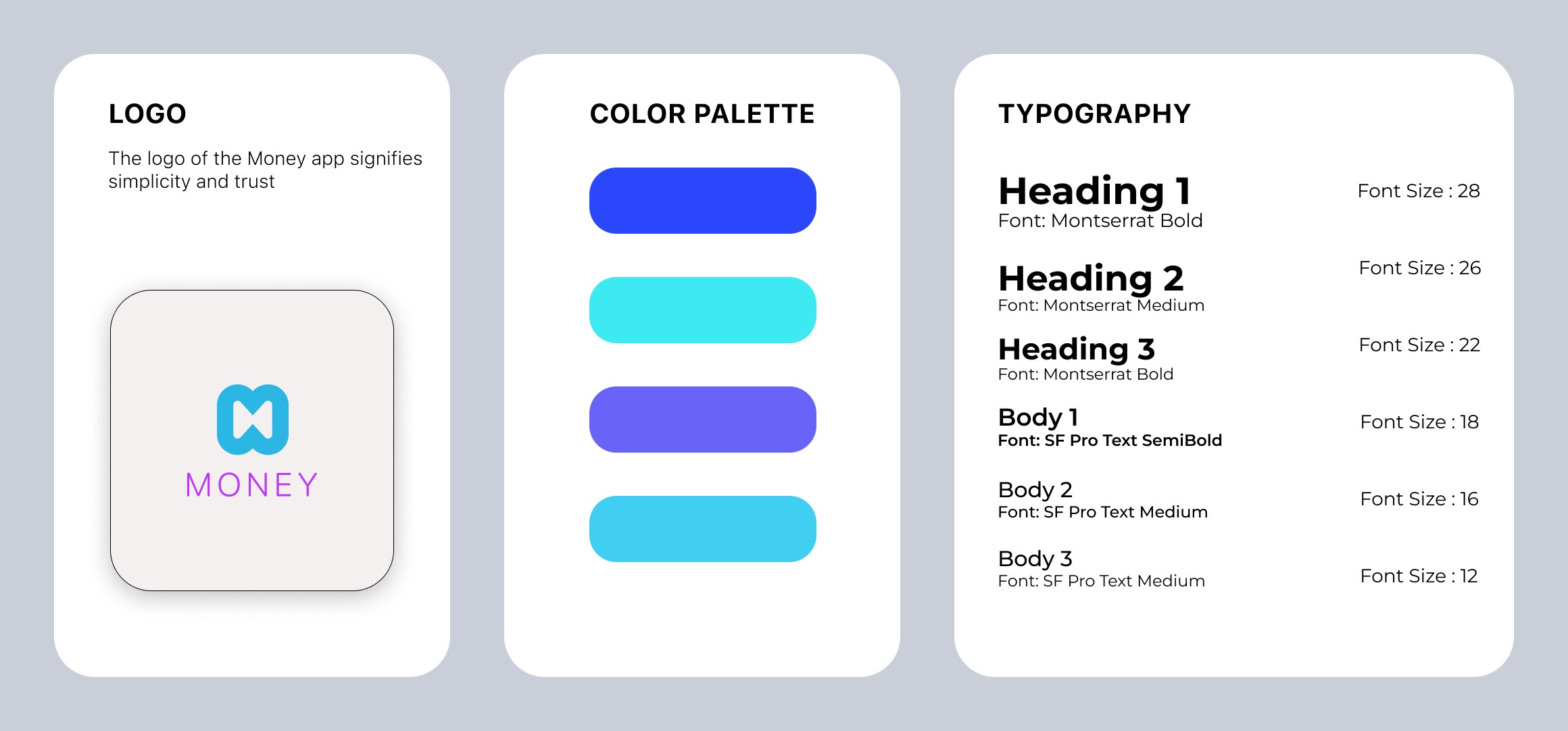RIT Hyperwalk
Develop a user-friendly campus navigation application that provides accurate, real-time guidance for students, faculty, and visitors, specially helping to tackle harsh climate.
Team Members
Sachin Bajpai
Dhaval Mahajan
Vedika Nimbalkar
Rinky Mahajan
Prajyot Meshram
My Role:
UX Designer
Timeline:
Jan'24 - May'24
Goals - RIT
Objective of RIT Hyperwalk is to improve the navigation experience on the RIT campus by redesigning the user interface of the campus map application, with a special focus on enhancing indoor navigation and overall user experience.
Current Problems:
Problem #1
Inefficient Navigation Tools: RIT Maps application fails to provide clear and intuitive guidance, leading to confusion and frustration among users.
Problem #2
Indoor Navigation Challenges: Navigating the network of indoor pathways and tunnels on campus is difficult as it's not shown in the current application.
Problem #3
User Experience Issues: There is a need for a more user-friendly interface that enhances the overall user experience and addresses usability issues found in existing navigation tools.
Problem #4
Accessibility: The need to ensure that navigation aids are accessible to all users, including those with disabilities, is a significant concern.
Reseach and Analysis
RIT Hyperwalk progressed through a series of milestones, each contributing critical insights and data which informed development of the prototype's features.
Milestone 1: Conceptualization and Initial Requiremmnet Gathering
Objective: Establish need for imporoved navigation within campus, focusing on indoor pathways and accessibility.
User FeedBack: Initial user feedback and conceptual designs from this milestone laid the founation for the prototype's focus on enhancing indoor navigation capabilities and ensuring accessibility.
Milestone 2: Data Collection and Analysis
Objective: Collect and analyze data concerning current navigation challanges.
Method : User Interviews
User Feedback : Insights regarding challanges encountered by new students, faculty, and visitors in navigating the campus, espacially using existing maps, underscored necessity of a more intutive navigation system.
Milestone 3: Data Modeling and User Requirement Synthesis
Objective: Model user data to create detailed personas and derive specific user requirements for the navigation system.
Personas and Scenarios: The development of user personas such as incoming students, visiting professors, and guests helped tailor the prototype’s features to meet varied user needs.
Outcome: Analysis from this milestone led to the inclusion of specific features such as weather-adaptive navigation options, accessibility settings for users with disabilities.
Milestone 4: Prototype Development and Mid-Fidelity Testing
Objective: Develop a mid-fidelity prototype based on the insights and requirements identified in earlier milestones and test its usability.
Prototype Features: The prototype integrated advanced features like AR for real-time direction overlay, safety and emergency features, and community-driven content such as the availability of user reviews for different places like dining, and preferable routes.
Usability Testing: Feedback from user testing sessions was crucial in refining user interface elements, improving interactive map responsiveness, and ensuring that the navigation aids were effective under various real-world conditions.
Personas
Pain Points
So what exactly are the users saying?
Word Cloud
We created a word cloud to depict the frequency of words in the the user interviews which we had conducted as a part of or data collection process.
Affinity Diagrams
Motivation
Sketches
Iterations
Indoor Navigation Challenges: Navigating the network of indoor pathways and tunnels on campus is difficult as it's not shown in the current application.
Iteration One - AI ChatBot Screen
Problem #3
Iteration One - AI ChatBot Screen
User Experience Issues: There is a need for a more user-friendly interface that enhances the overall user experience and addresses usability issues found in existing navigation tools.
Iteration One - AI ChatBot Screen
Problem #4
INTERFACE
RIT Hyperwalk progressed through a series of milestones, each contributing critical insights and data which informed development of the prototype's features.
Milestone 1: Conceptualization and Initial Requiremmnet Gathering
Objective: Establish need for imporoved navigation within campus, focusing on indoor pathways and accessibility.
User FeedBack: Initial user feedback and conceptual designs from this milestone laid the founation for the prototype's focus on enhancing indoor navigation capabilities and ensuring accessibility.
Milestone 2: Data Collection and Analysis
Objective: Collect and analyze data concerning current navigation challanges.
Method : User Interviews
User Feedback : Insights regarding challanges encountered by new students, faculty, and visitors in navigating the campus, espacially using existing maps, underscored necessity of a more intutive navigation system.
Milestone 3: Data Modeling and User Requirement Synthesis
Objective: Model user data to create detailed personas and derive specific user requirements for the navigation system.
Personas and Scenarios: The development of user personas such as incoming students, visiting professors, and guests helped tailor the prototype’s features to meet varied user needs.
Outcome: Analysis from this milestone led to the inclusion of specific features such as weather-adaptive navigation options, accessibility settings for users with disabilities.
Milestone 4: Prototype Development and Mid-Fidelity Testing
Objective: Develop a mid-fidelity prototype based on the insights and requirements identified in earlier milestones and test its usability.
Prototype Features: The prototype integrated advanced features like AR for real-time direction overlay, safety and emergency features, and community-driven content such as the availability of user reviews for different places like dining, and preferable routes.
Usability Testing: Feedback from user testing sessions was crucial in refining user interface elements, improving interactive map responsiveness, and ensuring that the navigation aids were effective under various real-world conditions.
Personas
We created a word cloud to depict the frequency of words in the the user interviews which we had conducted as a part of or data collection process.
So what exactly are the users saying?

